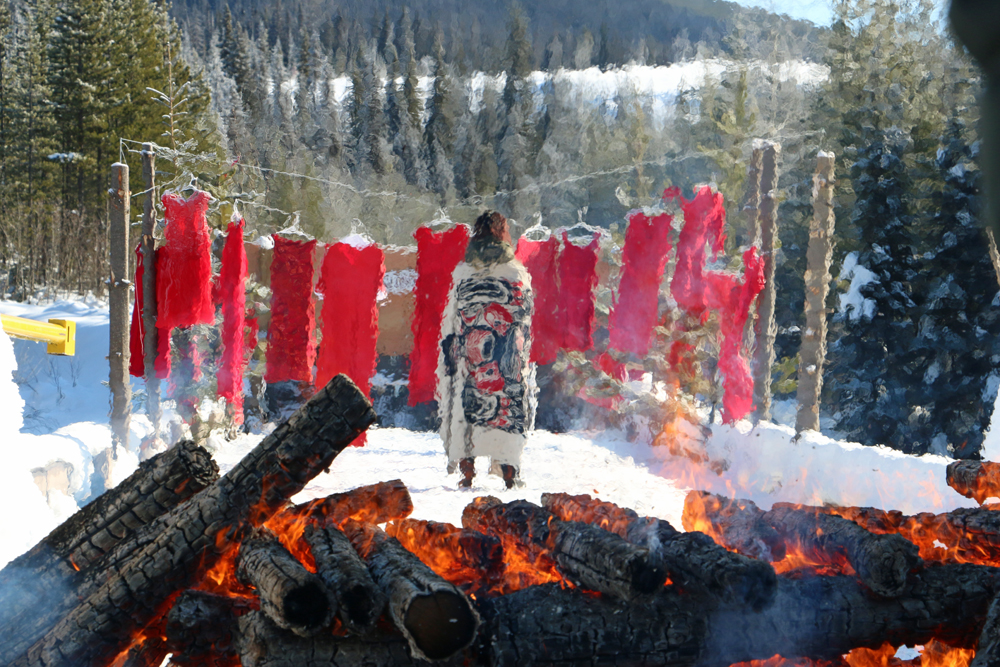The RCMP responded this week to a Tyee freedom of information request filed a year ago that asked what it spends investigating cases of missing and murdered Indigenous women and girls.
The response — which only provides a portion of total costs — reveals a piecemeal approach and lack of national strategy to solve crimes against Indigenous females.
Robert Gordon, a criminology professor at Simon Fraser University, called the news surprising in light of growing awareness about violence against Indigenous women following Canada’s Truth and Reconciliation Commission and the National Inquiry into Missing and Murdered Indigenous Women and Girls, which released a final report nearly two years ago.
Tracking and sharing the information is a matter of “basic accountability,” he said.
“The police are there, theoretically, to provide all of us with security and public safety,” Gordon said. “There needs to be an accounting of how much money was spent doing what, with what results.”
Yet the response, received in a 54-page compilation of internal emails, indicates the force does not separately track cases of murdered and missing Indigenous women, despite calls for greater transparency and a new approach to its relationship with Indigenous communities.
In March 2020, The Tyee requested the total resources spent investigating cases of missing and murdered Indigenous women and girls between Jan. 1, 2019, and March 31, 2020.
A tally of responses forwarded from divisions across Canada shows the RCMP spent just over $3.6 million during the 15-month period, a small slice of its $3.5-billion annual budget.
However that total is incomplete and does not provide a full picture of how Canada’s national police force addresses what the national inquiry described as “genocide” against Indigenous women.
In a March 2020 email to the RCMP’s access to information and privacy branch, the force’s national headquarters called the request “fairly impossible” to answer, noting that homicides and missing persons are investigated individually by the RCMP’s 13 divisions.
Of those, responses were provided from just eight divisions — those in Newfoundland, Nova Scotia, Manitoba, Saskatchewan, Alberta, B.C., the Yukon and Nunavut. Information was also provided by B.C.’s integrated homicide investigation team, which includes members from the RCMP and municipal forces.
In addition, the RCMP’s sensitive and specialized investigative services reported 642 hours — about 16 weeks — spent supporting investigations into missing Indigenous child and adult females. It did not include a dollar amount.
The divisions that did provide a cost summary only included additional expenses, such as travel and overtime, but not regular salaries, which are not tracked, many divisions noted.
“As indicated, this is not indicative of the total number of person hours dedicated to these investigations,” an email from Alberta RCMP’s serious crimes branch said. “This is not information which is tracked.”
No information was provided by RCMP divisions in Ontario and Quebec, which also have their own provincial police forces.
In addition, divisions in the Northwest Territories, New Brunswick and Prince Edward Island, provinces that rely on RCMP for provincial policing, did not provide a response.
The divisions that did respond showed expenses that ranged from just over $65,000 in the Yukon to $1.25 million in Alberta for things like “overtime, travel, covert investigations, and assistance from other police forces.”
Nunavut declined to provide a cost estimate at all.
“We have no way of tracking the exact costs of these files and there is no system that I am aware of that monitors this either,” Cpl. Erik Lieng said in his response to the RCMP’s access to information and privacy branch.
“I can say that during that time period we had two files meeting the below request,” Lieng added.
Most divisions that provided a response showed similar case numbers.
Both the Yukon and Newfoundland and Labrador said they had investigated two cases during the time period; Saskatchewan reported six; the combined total for B.C.’s major crimes unit and integrated homicide investigations team was six; Nova Scotia revealed one case under investigation during the time period, a homicide.
Manitoba and Alberta revealed significantly higher case numbers, at 36 and 23 cases, respectively.
Lorraine Whitman, president of the Native Women’s Association of Canada, said those numbers don’t mesh with the hundreds of families who shared their stories during the national inquiry and hundreds more who felt too traumatized to testify.
“There’s hundreds, and even into the thousands. We do not have a proper database that’s been given to us,” she said.
“How many have been moved on to cold files? We don’t know.”
In a 2015 update, the RCMP reported 204 unsolved homicides and missing persons cases amongst Indigenous women in Canada.
Whitman, who is based in Nova Scotia, said that province’s single case is likely Cassidy Bernard, a young mother from the We'koqma'q First Nation who was found dead in her home in October 2018. The high-profile nature of the case and pressure from the community resulted in an arrest in 2019, she said.
Manitoba and Alberta, provinces that stood out as reporting higher-than-average case numbers, both have RCMP units dedicated to murdered and missing persons.
Gordon said the discrepancy is “probably a counting issue” between distinct divisions.
“In the absence of national co-ordination, there are going to be errors, and they can be fatal to any attempt to come up with a national picture,” he said.
Gordon said lack of a co-ordinated approach and national data limits police effectiveness in dealing with the cases. He pointed to the investigation into the disappearance of women from Vancouver’s Downtown Eastside two decades ago as a case study in how multi-jurisdictional policing can hamper investigations.
In 2001, the RCMP established Project Evenhanded to oversee investigations into the disappearances, which overlapped RCMP and Vancouver Police Department jurisdictions. Robert Pickton was arrested — and later convicted — in the deaths of six women the following year. He had been killing women for at least five years by then.
“There was no co-ordination of effort until they realized that there was a serial killer at work,” Gordon said. “Then they decided that they should have been a more co-ordinated investigation.”
Project Evenhanded has since been disbanded, but a 2012 inquiry outlined “critical police failures” during the Downtown Eastside disappearances, including “failure to address cross-jurisdictional issues and ineffective co-ordination between police forces and agencies.” In the report, commissioner Wally Oppal credited Project Evenhanded with improving communication between multiple branches of the RCMP and the Vancouver Police Department.
The report notes that criminal activity can be obscured by jurisdictional boundaries, which create gaps in law enforcement and investigations.
“There is no question that this was true in the missing women investigations, and the challenge to apprehend was exacerbated by poor communication and co-ordination between police forces and agencies involved in the investigations,” the report states.
“The missing women investigations failed, in large part, because the approach was always one of multiple investigations. No one was in charge of the case as a whole.”
In an emailed response to The Tyee, the RCMP’s national headquarters said the force has begun to make changes to policies, procedures and training to address the issue of murdered and missing Indigenous women and girls.
It pointed to $9.6 million received over five years, beginning in 2019, to support the National Office of Investigative Standards and Practices, which “acts as an internal RCMP centre of expertise and provides national oversight for high profile/major case investigations.”
The national unit will not be specific to murdered and missing Indigenous women and girls, it said, but will provide “advice, guidance and national oversight” to investigations, including those related to violence against Indigenous women.
“By setting national standards and providing advanced investigative training, the NOISP will benefit all major case investigations — including cases of missing or murdered Indigenous women and girls,” the email said.
“As Indigenous females and other vulnerable persons are overrepresented as victims of high profile and major crimes, a significant proportion of the investigative support work of the NOISP will focus on cases involving Indigenous and vulnerable victims of crime in RCMP jurisdictions.”
An email from the office of the Minister of Public Safety and Emergency Preparedness also pointed to NOISP as “an integral tool in the governance, oversight, co-ordination and application of sound major case management principles to high-risk investigations” involving missing and murdered Indigenous women.
“Reconciliation is a crucial priority for our government and we are working tirelessly to renew our relationship with Indigenous peoples based on the recognition of rights, respect and co-operation,” press secretary Mary-Liz Power said.
“We know that there is work left to do, and that we need to do better.”
In addition, the RCMP is contributing to the federal government’s National Action Plan, which it said is aimed at addressing violence against Indigenous women, girls, Two Spirit and LGBTQQIA+ people.
An email from the office of the Minister of Crown-Indigenous Relations said the National Action Plan is a priority for the federal government. It will include contributions from all levels of government, including provincial, territorial, municipal and Indigenous, with the first part released by the Yukon government in December.
“The resulting distinctions-based National Action Plan will be rooted in, and will address the unique needs, experiences, and cultural contexts of, Indigenous peoples and communities,” the email said.
It did not provide an estimated completion date for the plan.
Gordon said that while it’s easy to identify the crisis in hindsight, national institutions like the RCMP take some time to pivot toward a response.
“I think what it does is to amplify the problems involved with the organization of police in this country,” he said, adding that Canada’s national police force also takes on contracts that range from municipal to international policing. “This complicates the picture beyond belief.”
Whitman added that the disappearance of unknown numbers of missing and murdered Indigenous women constitutes more than a crisis.
“It’s genocide,” she said.
Governments and institutions need to recognize that, she added.
“It’s not going to change until we acknowledge the problem,” she said. “We all know it exists. But until we say, yes, it exists, how can we solve it?” ![]()
Read more: Indigenous, Rights + Justice
















Tyee Commenting Guidelines
Comments that violate guidelines risk being deleted, and violations may result in a temporary or permanent user ban. Maintain the spirit of good conversation to stay in the discussion.
*Please note The Tyee is not a forum for spreading misinformation about COVID-19, denying its existence or minimizing its risk to public health.
Do:
Do not: